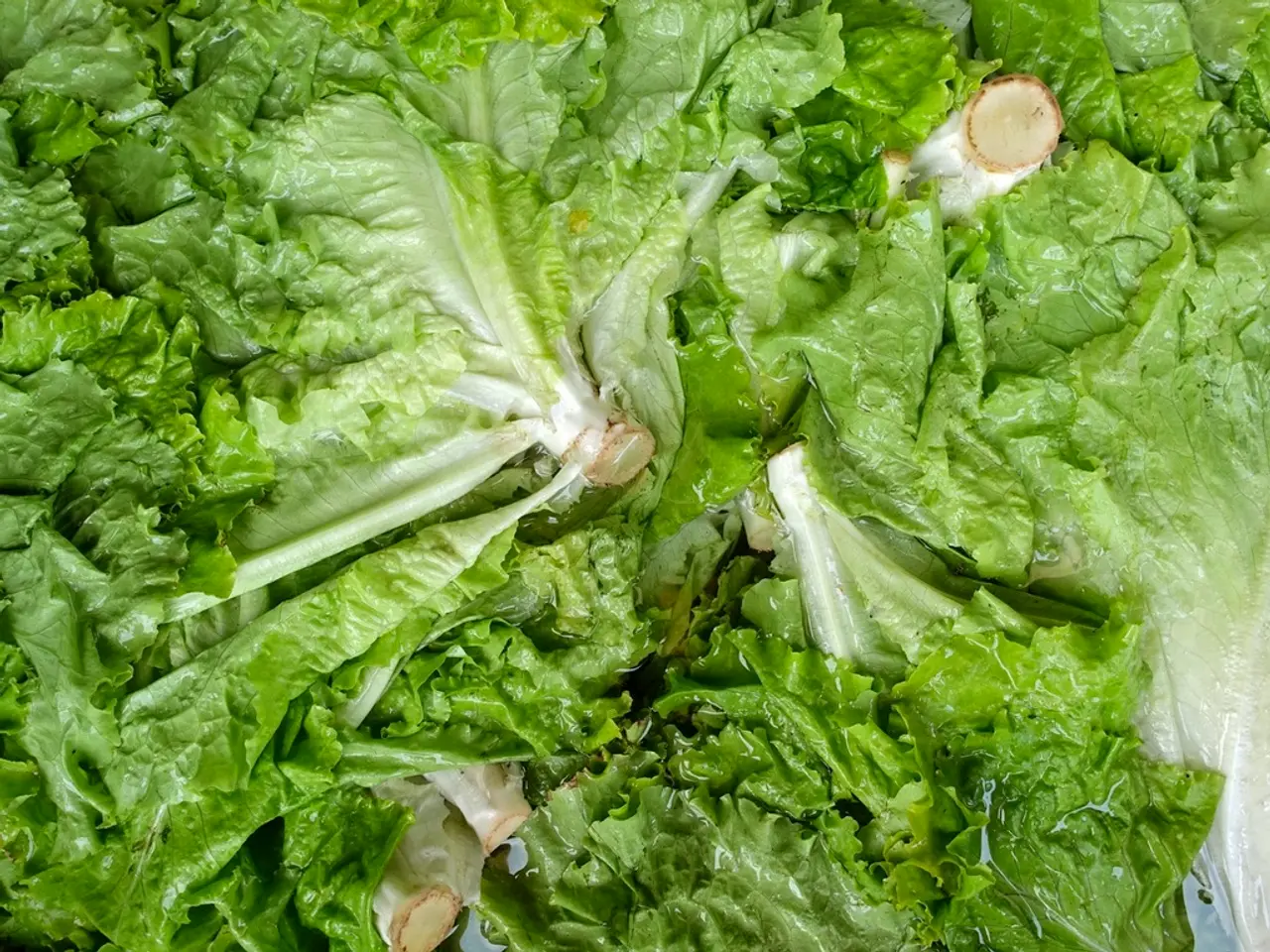Infestation of Powdery Mildew in Greenhouse-Cultivated Lettuce
Controlling Powdery Mildew in Greenhouse Lettuce Cultivation
Powdery mildew, a common fungal disease that affects lettuce in greenhouse environments, can be a challenge for growers. However, effective control is achievable through a combination of plant selection, environmental management, and fungicide application.
Plant Selection
Choosing powdery mildew-resistant lettuce cultivars reduces disease incidence. Although specific resistant lettuce varieties are not detailed, planting resistant cultivars is a widely recommended strategy to prevent powdery mildew [3].
Environmental Control
Managing the greenhouse climate is crucial to discourage powdery mildew growth. Lettuce prefers temperatures between 40°F and 70°F (4°C and 21°C) and humidity levels between 50% and 70% [1]. To maintain optimal conditions:
- Maintain temperature via heating, cooling, and ventilation systems [1].
- Ensure good air circulation to prevent moisture buildup on foliage, as stagnant moist air promotes fungal growth [2][3].
- Avoid excessive humidity or leaf wetness, which can encourage powdery mildew development [3].
- Provide sufficient light exposure, as powdery mildew is deterred by planting in sunny areas with good airflow [3].
Fungicide Usage
When cultural and environmental controls are insufficient, fungicides can be applied. Only use fungicides labeled for powdery mildew control on lettuce, carefully following instructions [3]. Examples of fungicides effective against powdery mildew include:
- Neem oil
- Sulfur-based products (e.g., Cosavet-DF Edge Sulfur)
- Horticultural oils (e.g., Monterey Horticultural Oil)
- Biological fungicides like Serenade
- Organic sprays such as Safer 3-in-1 or Safer Garden Fungicide [3]
Natural remedies like diluted milk sprays or baking soda solutions (1-5 tablespoons per gallon of water) can also suppress powdery mildew with low environmental impact, but these are supplementary to proven fungicides and environmental management [4][5].
Powdery Mildew Symptoms
Powdery mildew symptoms include patches of white powdery growth on the upper and lower leaves and stems. It is essential to monitor plants regularly, particularly in areas with reduced air flow, dense plant canopies, or standing water.
Greenhouse Hygiene
Regular cleaning of greenhouse surfaces and removing infected plants can help prevent the spread of powdery mildew. Additionally, ensuring proper drainage and avoiding overwatering can help maintain a less favourable environment for the disease.
In summary, the integrated approach to controlling powdery mildew in greenhouse lettuce cultivation includes selecting resistant varieties, maintaining optimal temperature, humidity, and airflow conditions inside the greenhouse, and applying appropriate fungicides or natural treatments when needed. Regular monitoring and greenhouse hygiene reinforce these measures to minimize disease risk [2][3]. It is important to note that products labeled for control of powdery mildew on ornamentals may not be labeled for use on greenhouse vegetables.
- In the realm of health-and-wellness and lifestyle, choosing lettuce cultivars resistant to powdery mildew is a beneficial strategy, as outlined by various studies [3].
- Fitness-and-exercise for lettuce involves maintaining the greenhouse climate in a manner unfavorable to powdery mildew growth, such as by managing temperature, humidity, and airflow [1][2][3].
- Therapies-and-treatments for powdery mildew in lettuce can include the application of fungicides, such as Neem oil, sulfur-based products, horticultural oils, biological fungicides, and organic sprays [3].
- Home-and-garden hobbyists and gardeners can play a role in powdery mildew prevention by regularly cleaning greenhouse surfaces, removing infected plants, and promoting proper drainage and avoiding overwatering [2][3].




